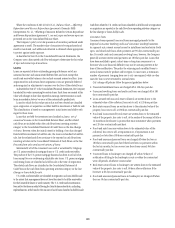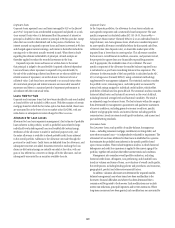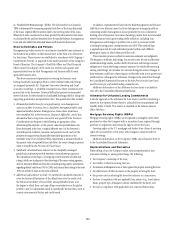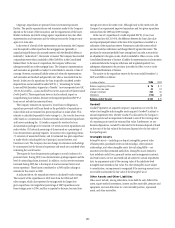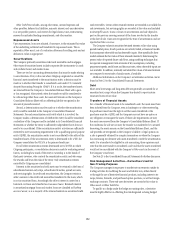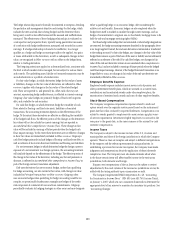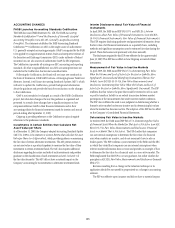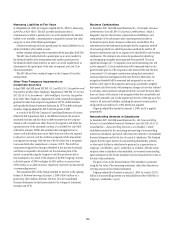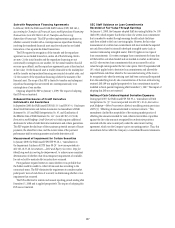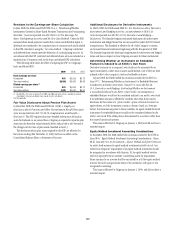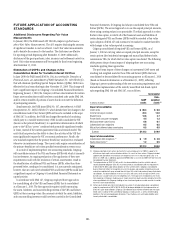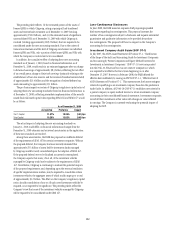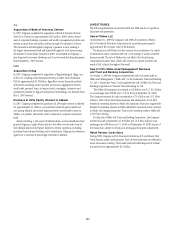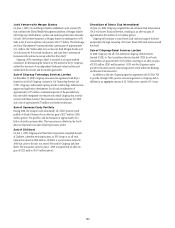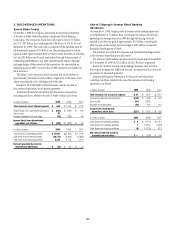Citibank 2009 Annual Report Download - page 148
Download and view the complete annual report
Please find page 148 of the 2009 Citibank annual report below. You can navigate through the pages in the report by either clicking on the pages listed below, or by using the keyword search tool below to find specific information within the annual report.138
Fair Value Measurements
The Company elected to early adopt SFAS No. 157, Fair Value Measurements
(SFAS 157) (now ASC 820-10, Fair Value Measurements and Disclosures),
as of January 1, 2007. The Statement defines fair value, expands disclosure
requirements around fair value and specifies a hierarchy of valuation techniques
based on whether the inputs to those valuation techniques are observable or
unobservable. Observable inputs reflect market data obtained from independent
sources, while unobservable inputs reflect the Company’s market assumptions.
These two types of inputs create the following fair value hierarchy:
Level 1: Quoted prices for • identical instruments in active markets.
Level 2: Quoted prices for • similar instruments in active markets; quoted
prices for identical or similar instruments in markets that are not
active; and model-derived valuations in which all significant inputs and
significant value drivers are observable in active markets.
Level 3: Valuations derived from valuation techniques in which one or •
more significant inputs or significant value drivers are unobservable.
This hierarchy requires the Company to use observable market data, when
available, and to minimize the use of unobservable inputs when determining
fair value. For some products or in certain market conditions, observable
inputs may not always be available. For example, during the market
dislocations that started in the second half of 2007, certain markets became
illiquid, and some key observable inputs used in valuing certain exposures
were unavailable. When and if these markets become liquid, the valuation of
these exposures will use the related observable inputs available at that time
from these markets.
Citigroup is required to take into account its own credit risk when
measuring the fair value of derivative positions as well as the other liabilities
for which fair value accounting has been elected. The adoption of ASC
820 also resulted in some other changes to the valuation techniques used
by Citigroup when determining fair value, most notably the changes to
the way that the probability of default of a counterparty is factored in and
the elimination of a derivative valuation adjustment which is no longer
necessary. The cumulative effect at January 1, 2007 of making these changes
was a gain of $250 million after-tax ($402 million pretax), or $0.05 per
diluted share, which was recorded in the first quarter of 2007 earnings within
the Securities and Banking business.
The statement also precludes the use of block discounts for instruments
traded in an active market, which were previously applied to large holdings
of publicly traded equity securities, and requires the recognition of trade-date
gains after consideration of all appropriate valuation adjustments related to
certain derivative trades that use unobservable inputs in determining their
fair value. Previous accounting guidance allowed the use of block discounts
in certain circumstances and prohibited the recognition of day-one gains on
certain derivative trades when determining the fair value of instruments not
traded in an active market. The cumulative effect of these changes resulted in
an increase to January 1, 2007 Retained earnings of $75 million.
Fair Value Option
The Company also early adopted SFAS 159, The Fair Value Option for
Financial Assets and Financial Liabilities (SFAS 159) (now ASC 825-10-05,
Financial Instruments: Fair Value Option) as of January 1, 2007. The fair
value option provides an option on an instrument-by-instrument basis for
most financial assets and liabilities to be reported at fair value with changes
in fair value reported in earnings. After the initial adoption, the election is
made at the acquisition of a financial asset, a financial liability, or a firm
commitment and it may not be revoked. The fair value option provides an
opportunity to mitigate volatility in reported earnings that resulted prior to
its adoption from being required to apply fair value accounting to certain
economic hedges (e.g., derivatives) while having to measure the assets and
liabilities being economically hedged using an accounting method other
than fair value.
The Company elected to apply fair value accounting to certain financial
instruments held at January 1, 2007 with future changes in value reported
in earnings. The adoption of the fair value option resulted in a decrease to
January 1, 2007 Retained earnings of $99 million.
Leveraged Leases
On January 1, 2007, the Company adopted FSP FAS 13-2, Accounting for
a Change or Projected Change in the Timing of Cash Flows Relating to
Income Taxes Generated by a Leverage Lease Transaction (FSP 13-2)
(now incorporated into ASC 840-10-25, Leases), which provides guidance
regarding changes or projected changes in the timing of cash flows relating
to income taxes generated by a leveraged-lease transaction.
Leveraged leases can provide significant tax benefits to the lessor,
primarily as a result of the timing of tax payments. Since changes in the
timing and/or amount of these tax benefits may have a significant effect
on the cash flows of a lease transaction, a lessor will be required to perform
a recalculation of a leveraged-lease when there is a change or projected
change in the timing of the realization of tax benefits generated by that lease.
Previously, Citigroup did not recalculate the tax benefits if only the timing of
cash flows had changed.
The adoption of FSP 13-2 resulted in a decrease to January 1, 2007
Retained earnings of $148 million. This decrease to retained earnings
will be recognized in earnings over the remaining lives of the leases as tax
benefits are realized.


